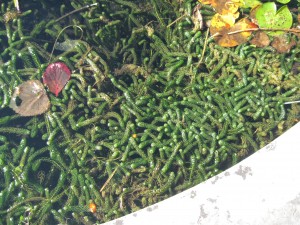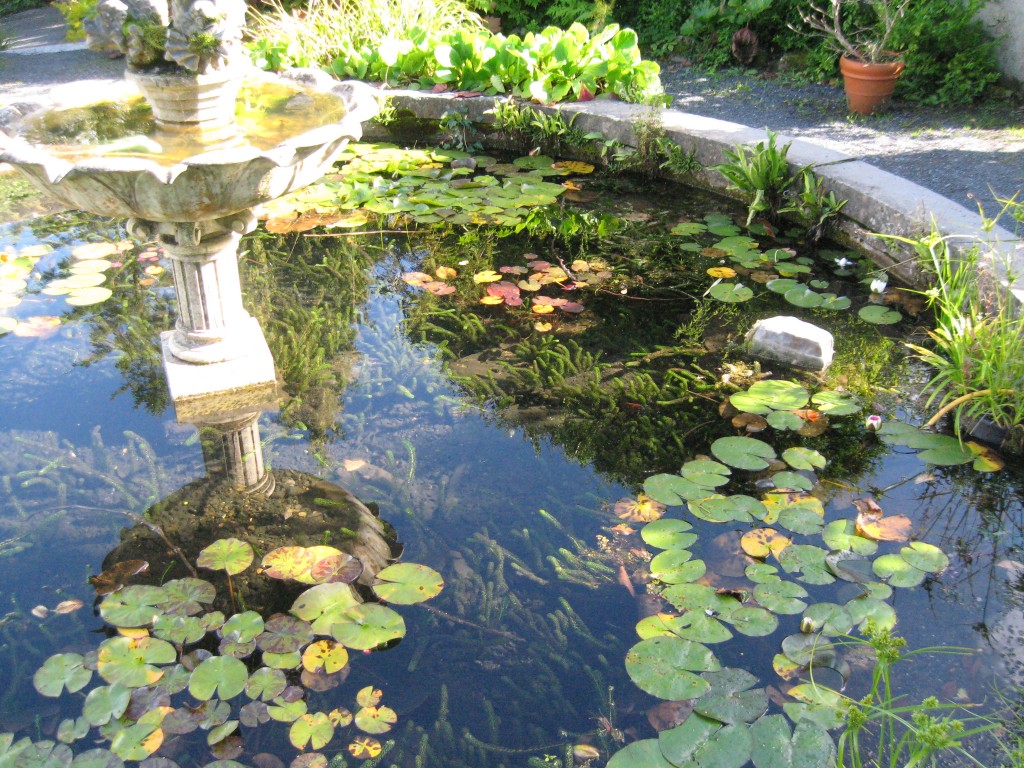Invasive Species, Lagarosiphon
Lagarosiphon major, Curly leaved pond weed or African pondweed, was first identified in Lough Corrib in April 2005. Native to southern Africa, the plant quickly overtook native plant growth and threatened fish stocks in the lake. Not only does it threaten the biodiversity of Lough Corrib, but its biomass can interfere with navigation and water-based recreation due to potential entanglement. In clear water it can grow to a depth of 6m and it can establish itself in most aquatic environments. Beneath the dense canopy cover produced by the plant, virtually no incident light can penetrate.

According to CAISIE (Control of Aquatic Invasive Species in Ireland)
‘The distribution of the weed in Lough Corrib is being monitored as an ongoing concern. An extensive survey of the lower lake to assess whether it has become established has just been completed. Fortunately, no Lagarosiphon was found to be present, however, a number of habitat ‘hot spots’ were identified that are considered ideal for the weed to colonise. These areas will be monitored regularly in future to facilitate an early detection should the weed attempt to establish in this part of the lake.’
It’s difficult to establish how much this invasive species has cost to control to date, but clearly control of the pest nationwide should be a priority. In those areas where Lagarosiphon became well established in Lough Corrib, it had a significant negative impact on indigenous macrophyte communities.
Last month Ger encountered the plant in a pond in the landscaped garden at Belvedere, Co. Westmeath. During a lunch break he decided to have a look at Belvedere House and gardens, a stones throw from Lough Ennell.
Lough Ennell is designated under both under the EU Habitats Directive and the EU Birds Directive.
During a chance look in the recently restored Victorian walled garden he noticed the weed growing profusely in the garden pond.

He quickly contacted Dr. Joe Caffrey, Senior Research Officer with Inland Fisheries Ireland to report the finding. Dr. Caffrey subsequently emailed to say that the management at Belvedere House could not have been more helpful and it was in the process of drying out the pond and ensuring that the Lagarosiphon would not regrow. They subsequently intend to do an article in the local press to alert people to the risks associated with invasives such as this, which as Joe put it, is a good result.
Joe further went on to say that Ger could have saved Lough Ennell!!
This entry was posted on Thursday, October 7th, 2010 at 2:02 pm. It is filed under About Environment and tagged with biodiversity, environmental consultant, environmental consultants ireland, Invasive species, Lagarosiphon, Lough Corrib, Lough Ennel.
You can follow any responses to this entry through the RSS 2.0 feed.




